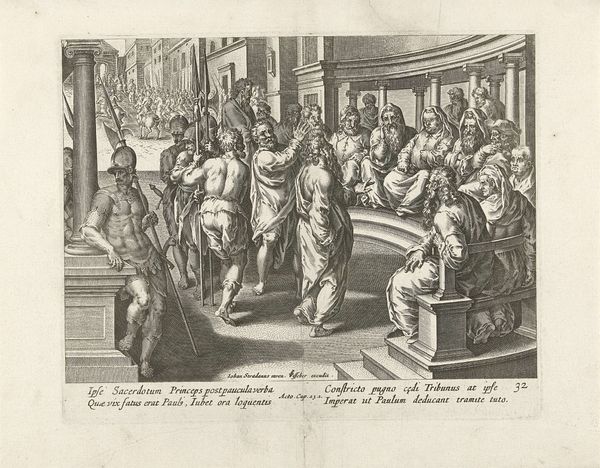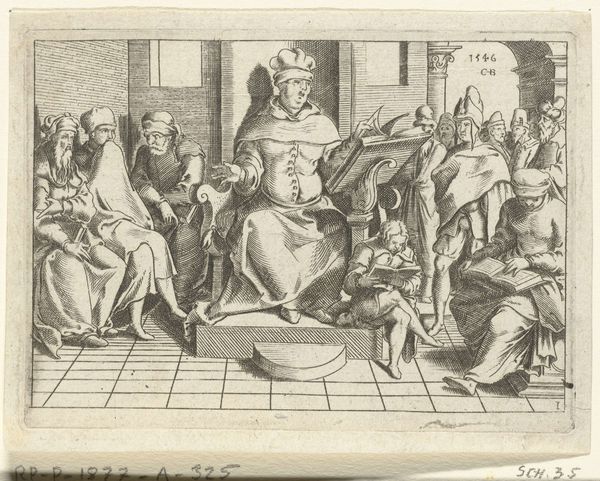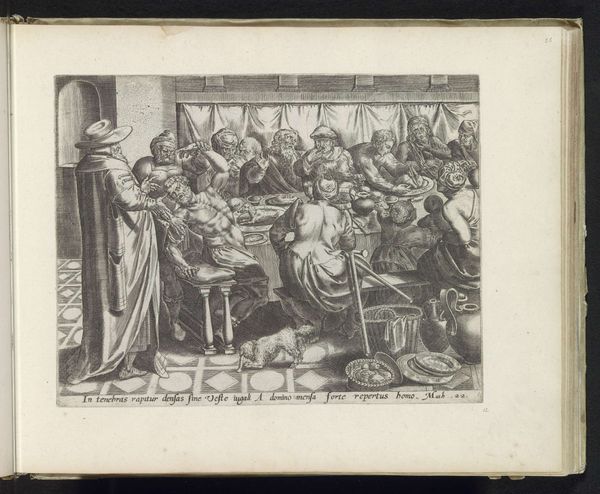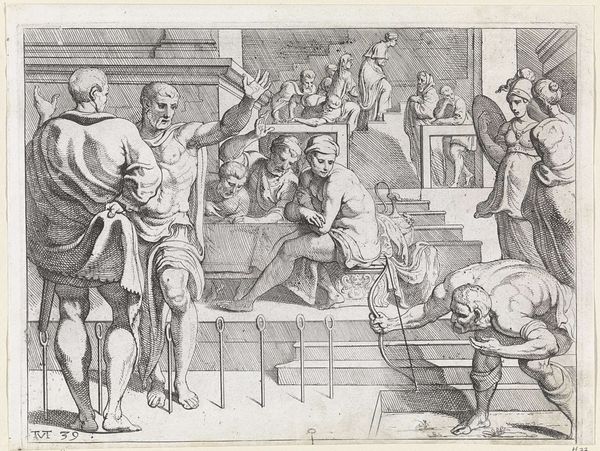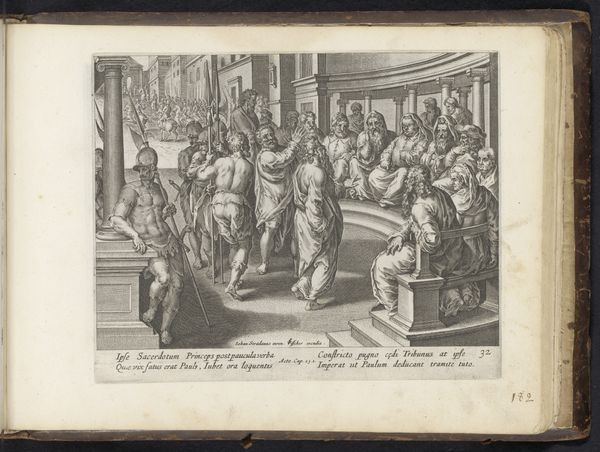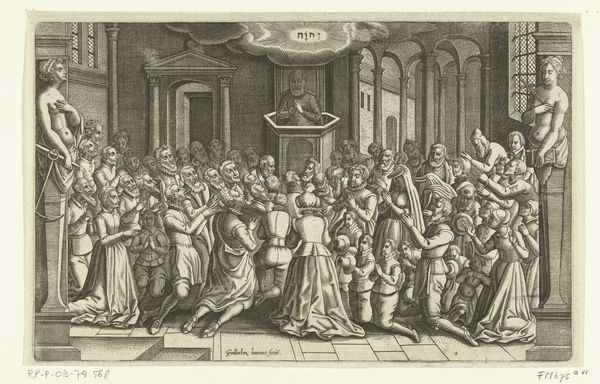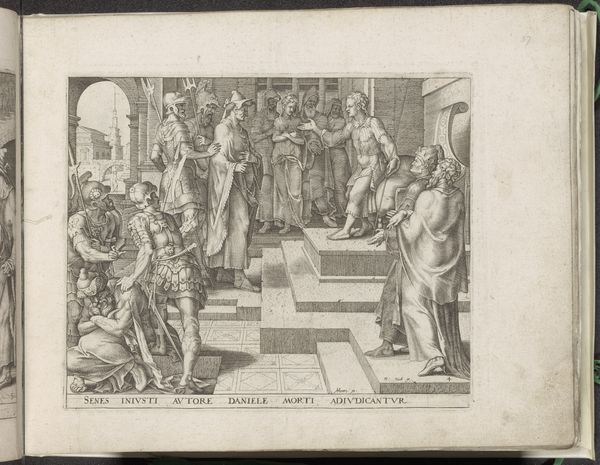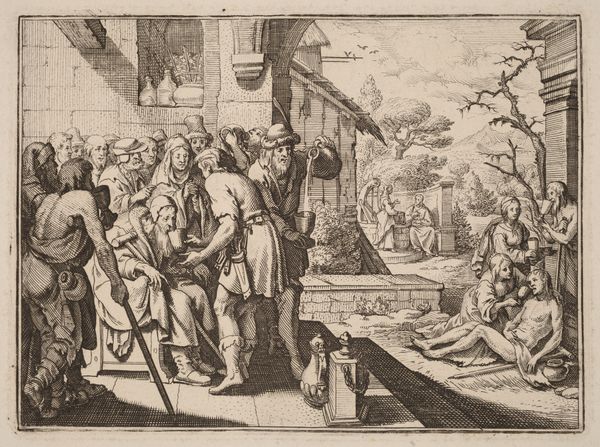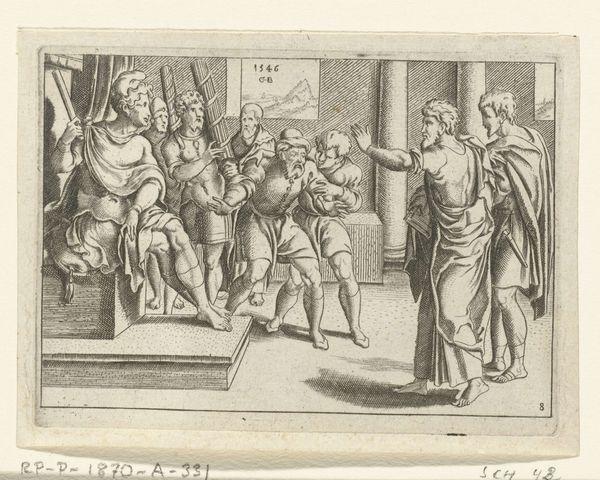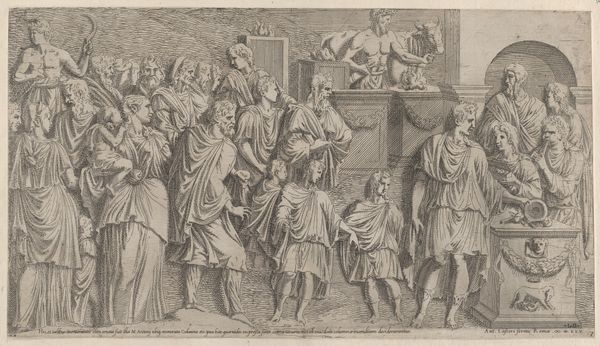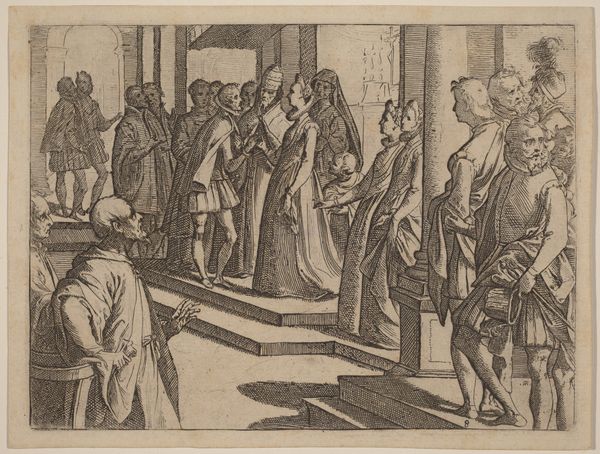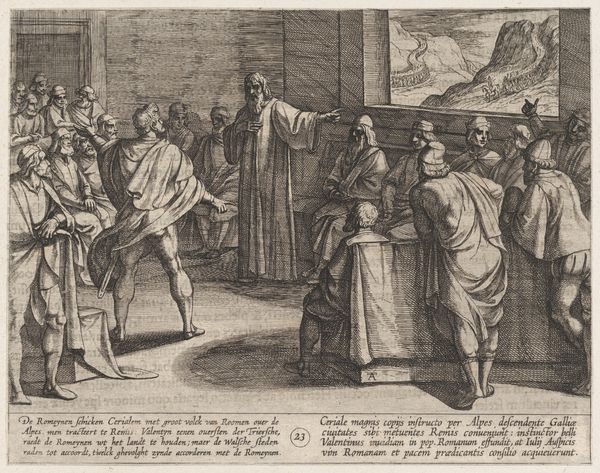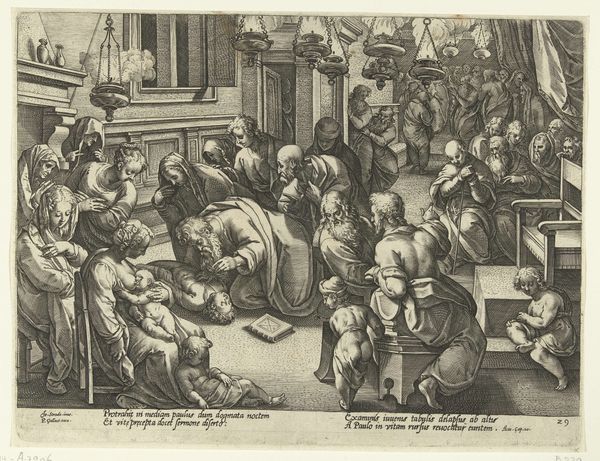
drawing, print, engraving
#
portrait
#
drawing
# print
#
figuration
#
11_renaissance
#
line
#
history-painting
#
northern-renaissance
#
engraving
Dimensions: height 85 mm, width 115 mm
Copyright: Rijks Museum: Open Domain
Editor: This is Cornelis Bos’s "Paulus preekt in de synagoge," or "Paul Preaching in the Synagogue," created in 1546. It's an engraving, which gives it a very linear quality. I’m struck by the almost stark setting – the figures dominate, and I am curious about their arrangement and dress. What can you tell me about this work? Curator: Consider the engraving process itself. Lines are etched into a metal plate, ink is applied, and then transferred to paper. Think about the labor involved in this multiplication. The availability of such prints changed how people engaged with images. Here, look at the clothing. It is not just fabric, but an indication of status, and possibly even profession. Who were these people who witnessed Paul preaching, and what kind of access did they have to such an image? Editor: So, you’re saying the act of creating this image, a print made to be reproduced and disseminated, is as important as what it depicts? And that by understanding what materials these people have, can we consider their role in society? Curator: Exactly! Look at the lines defining the folds in Paul's robe. They speak to a careful rendering, sure, but they also hint at the availability of cloth. How does access to different materials define status in this era? Think about what it meant to *own* an image like this. Was it an investment? An act of faith? Editor: I never considered that someone might use it to communicate wealth. Are the different styles of hats clues as to how connected they may be in society? Curator: Possibly. But look beyond the immediate image. Where did Bos get his copper plate? Who taught him to engrave? These questions lead us to understand the art world and its place in 16th-century Europe. It's about seeing art not as isolated objects but as part of a larger economic and social fabric. Editor: I see now. The image isn't just about Paul, it's about the means of making it and what those means represent culturally. Curator: Precisely. That consideration reshapes our understanding of the work, doesn't it?
Comments
No comments
Be the first to comment and join the conversation on the ultimate creative platform.
